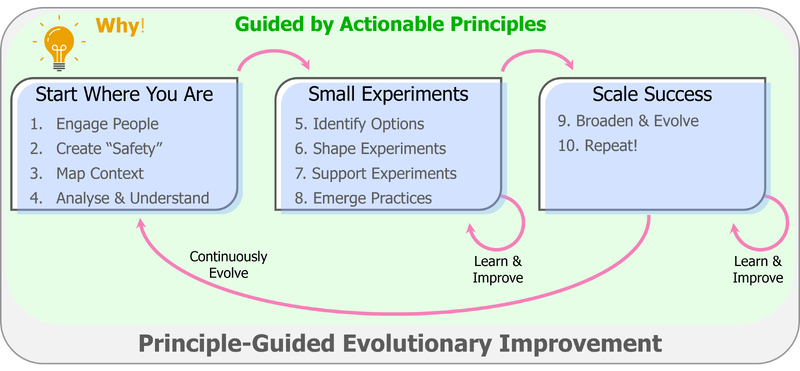How to Apply ELSE
ELSE proposes that change is an emergent and evolutionary approach. As such, at the core, it's about designing experiments that drive the change in a useful direction. But... what is this direction? Agility is about value delivery and the capability of "turning on a dime for a dime"[1], i.e. optimising for adaptability in product development. A common characteristic of many companies is to have a high level of Accidental Complexity in the way they have organised their product development. As such, how products and value streams are set up is a key element to inform change.
We noticed that often the improvement work on Teams, Product Ownership and Leadership to create a more agile ecosystem is severely constrained within the limits of how the value stream is structured.
Streamlining the value stream and achieving a more end-to-end product often opens up greater opportunities for improvement to product ownership, teams and leadership, thus enabling a more effective whole organisation.
To understand the best way to do it, The Product Perspective and the Defining Products Principles provide the background knowledge to inform your experiments.
As the definition of Product evolves, so it open more opportunities to evolve Team structures, Product Ownership and the overall System of Work, including how Leadership operates. The Teams' Perspective and The Coaching Perspective and all the Principles will help in the design of experiments that shape the organisational environment.
To help you in the implementation of these experiments, The Change Perspective describes how to create the needed emergent evolutionary culture in your organisation based on the ELSE actionable principles, which can be summarised as follows:
The catalyst of this work is, of course, Leadership! In order to support this work, they need to go themselves through a change process that involves learning to work as an end-to-end leadership team, rather than focusing their individual work on silos.

